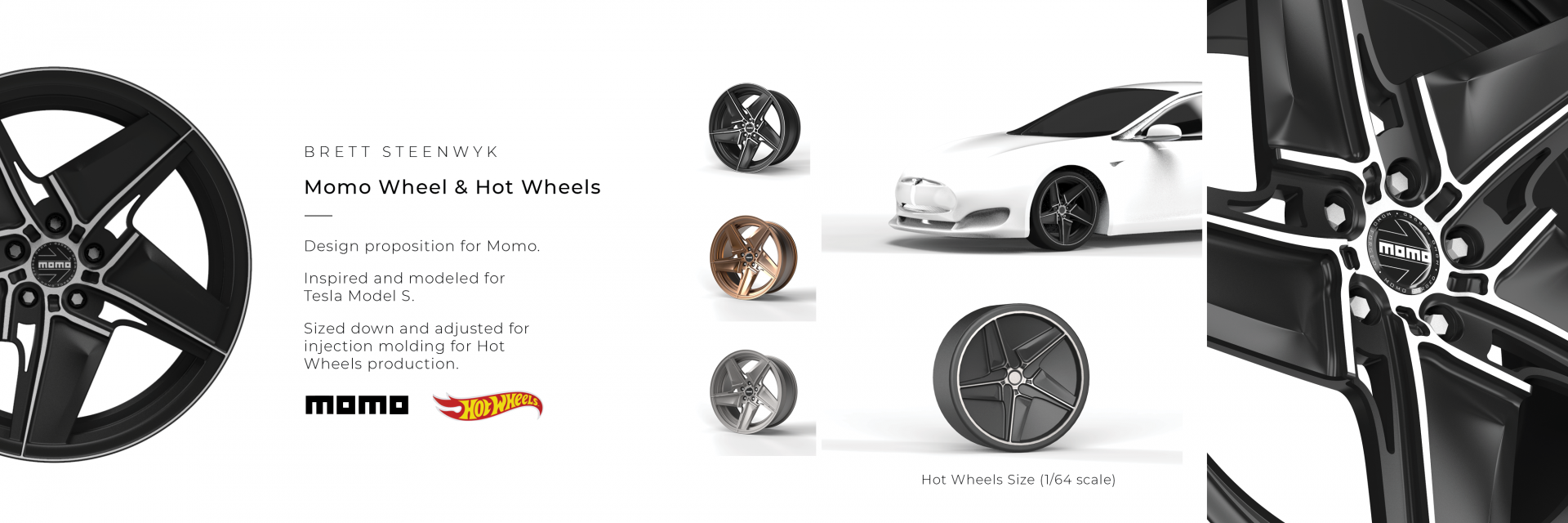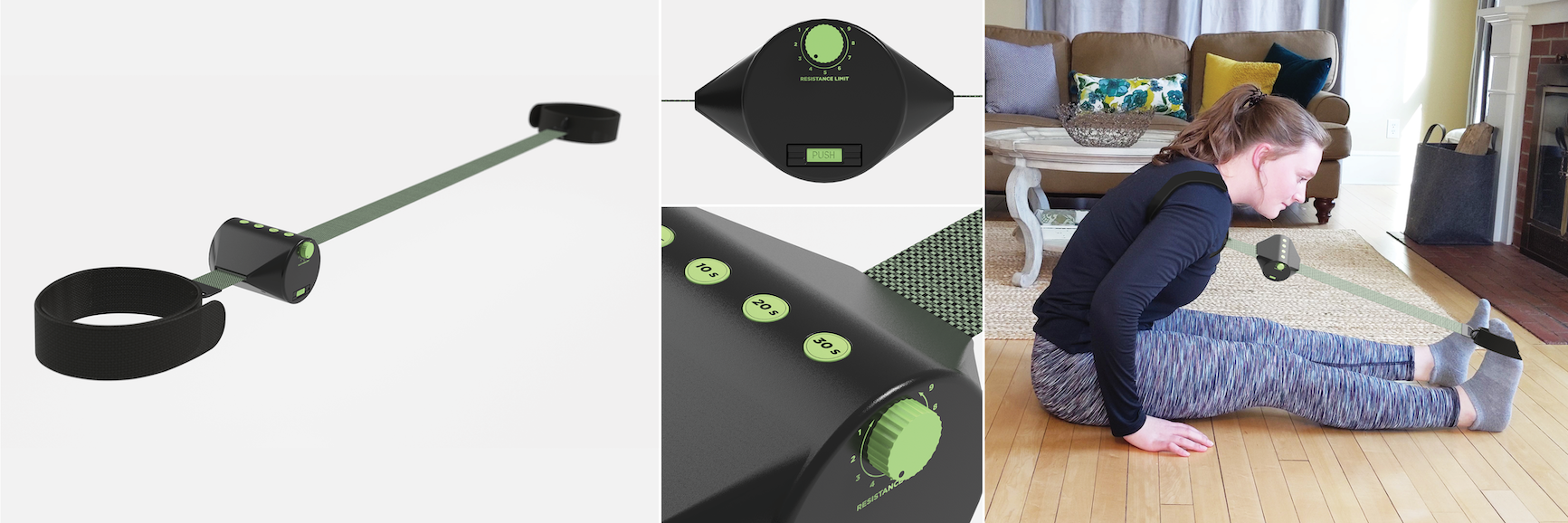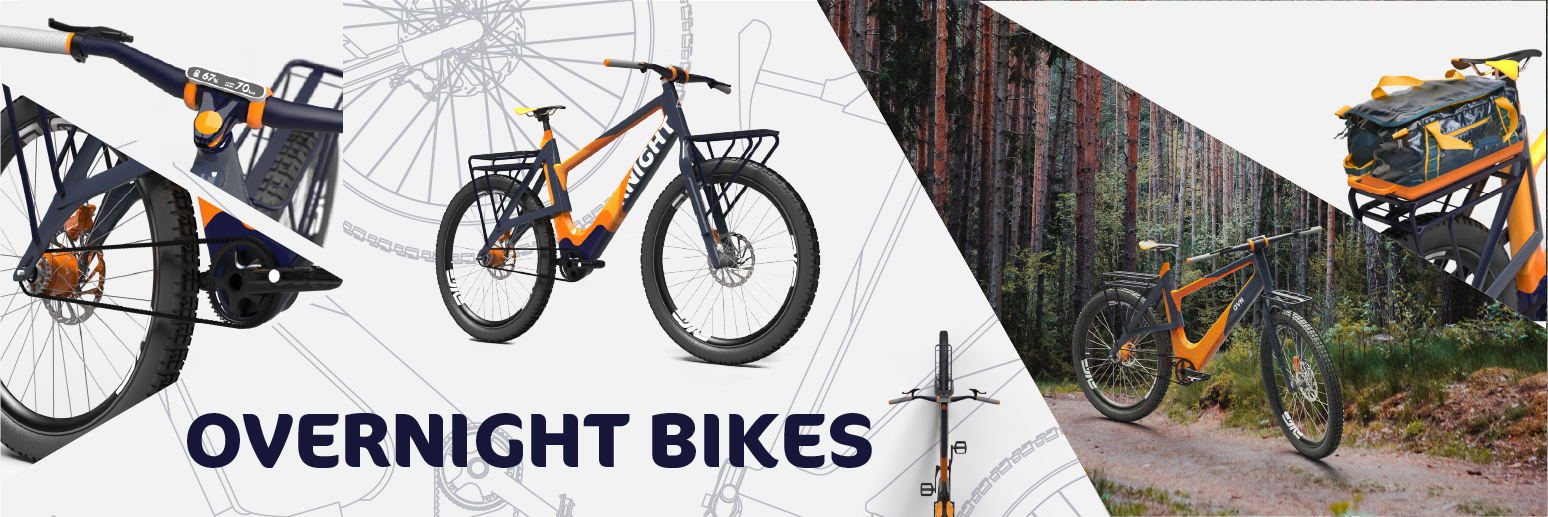
Electrolux Pen
Group Members: Wenyao Liy
Class: ID 3041 | Instructor: Sam Harris
The Electrolux Pen is the product of applying Electrolux visual brand language to a simple writing utensil. The design draws from Electrolux's drafted angles and classic materials combinations. The pen also targets Electrolux's market of professional chefs by offering a permanent marker on one end and a thermometer on the other.

Boon
Class: ID 3041 | Instructor: Sam Harris
Boon is a modular step-stool designed for interior painting. The target consumers are those desiring to do small home maintenance by themselves and not wanting to hire a professional. The step-stool compactly stores in a closet, and can expand horizontally to make painting large walls easier. Variable-size paint pails can be detached from either side that seal paint in storage.

MOMO Hot Wheels
Class: ID 3041 | Instructor: Sam Harris
MOMO Wheels is an after-market car accessories seller. This design proposition combines MOMO visual brand language with visual brand language from its target car, the Tesla Model S. This wheels follows Tesla sizing standards and MOMO manufacturing processes.
The second part of the project included applying the design to a Hot Wheels size. The size reduced to 1/64th of the original, details were removed, and draft was added for injection molding of the entire piece.

Becon
Class: Sophomore Studio | Instructor: Herb Velazquez
Becon is an outdoor decorative lamp designed for Historic Fourth Ward Park (shown in middle). The subtle curve is taken from the curvature of the amphitheater of the park and the intersecting frames are taken from the geometry of the park's railings. Becon serves as a source of light at night and a garden decoration during the day.

Tether
Class: Sophomore Studio | Instructor: Herb Velazquez
Tether is a motorized stretching assistant designed to mimic a partner-stretch. Human bodies are physiologically unable to stretch past a certain point, and an external force helps push past that barrier. Tether creates this external force in a safe way by drawing to parts of the body together until the stretching threshold is met. The threshold is similar to a drill clutch; the motor will spin and not allow any more torque to prevent spraining a muscle.

Kitchen Timer
Intro to Smart Products | Sang-Won Leigh, Yaling Liu, Wei Wang
The Hands-Free Kitchen Timer uses short-range IR sensors to detect hand motions in order to control the timer. Professional kitchens need many timers that need to be portable and each chef needs to control their own. Since chefs have dirty hands and work in a loud atmosphere, the Timer works perfectly as it does not rely on touch or sound. Chefs can simply slide it off the wall mount to carry it from station to station.

